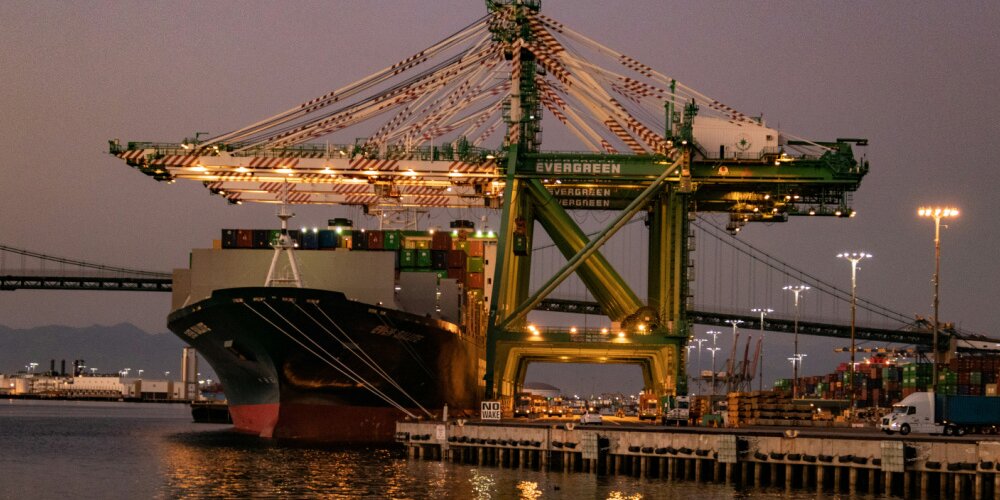Browse our services
Explore how Brookes Bell can help you
Find an expert
Meet our team, find and expert and connect
Contact us
Get in touch, we're here to help

Whilst the concept of carbon capture and sequestration (CCS) has been long known about in the power generation industry, it’s been a rather novel concept in shipping circles. But, a new trial at the Port of Hueneme in California could change this…
In collaboration with STAX Engineering, the Port of Hueneme is currently deploying self-propelled barges to capture emissions generated by vessels at berth.
The barges use a long boom with a vacuum pipe to envelop the exhaust stack of a vessel. Exhaust fumes generated by the vessel are then drawn down into the barge where a proprietary system removes 99% of particulate matter (PMI) and 95% of oxides of nitrogen (NOx). The ‘scrubbed’ gas is then released into the atmosphere.
The barges have been deployed at Port of Hueneme following a storm which damaged the port’s shore-side power system. With this system out of commission, another method was needed to deal with port emissions.
Approval for use of the novel barges was granted by the California Air Resources Board.
Commenting on the situation, and the use of the barges, Celina Zacarias, Board President for the Oxnard Harbor District, said:
“The storm damage has created an opportunity to continue showing how resilient our Port can really be. We are putting the community first through this type of collaboration, and we will continue to pursue these types of partnerships so that our neighbours can rest assured that their Port is doing everything in its power to reduce emissions”.
At the time of writing STAX Engineering has served an impressive 83 vessels at berth. The company is also offering its emissions capturing services at the Port of Los Angeles, Port of Long Beach, and Port of Oakland.
The company also has more success on the horizon following NYK Line’s announcement that it would be using STAX’s services whilst its vessels are in California ports.
Commenting on this company’s progress so far, Mike Walker, the CEO of STAX Engineering, said:
“One of the most important aspects of STAX technology is that it breaks fleet operator dependence on the local grid.
Shore power isn’t always available due to factors like major storms, limited outlet access, and vessel incompatibility. Our solution addresses these challenges, providing an easy, cost-effective, and environmentally friendly solution that solves the at-berth requirements for ports like the Port of Hueneme”.
If you operate in the Americas, then it pays to have the very best maritime consultancy services to hand.
Headquartered in Houston, Texas, but with specialists stationed across the lower 48, 3D Marine can support you with a variety of services, including:
Plus, with the support of Brookes Bell, 3D Marine is able to provide additional services such as metallurgy, non-destructive testing and more.
For more maritime industry insights, news and information, read the Brookes Bell News and Knowledge Hub…
European Maritime Agencies to Use Drones to Monitor Shipping Sulphur Emissions | Zero-Emission Tugs to Be Developed and Built by UK Consortium | Research Indicates That 95% of Shipping’s Zero Emission Fuel Projects Still on the ‘Drawing Board’